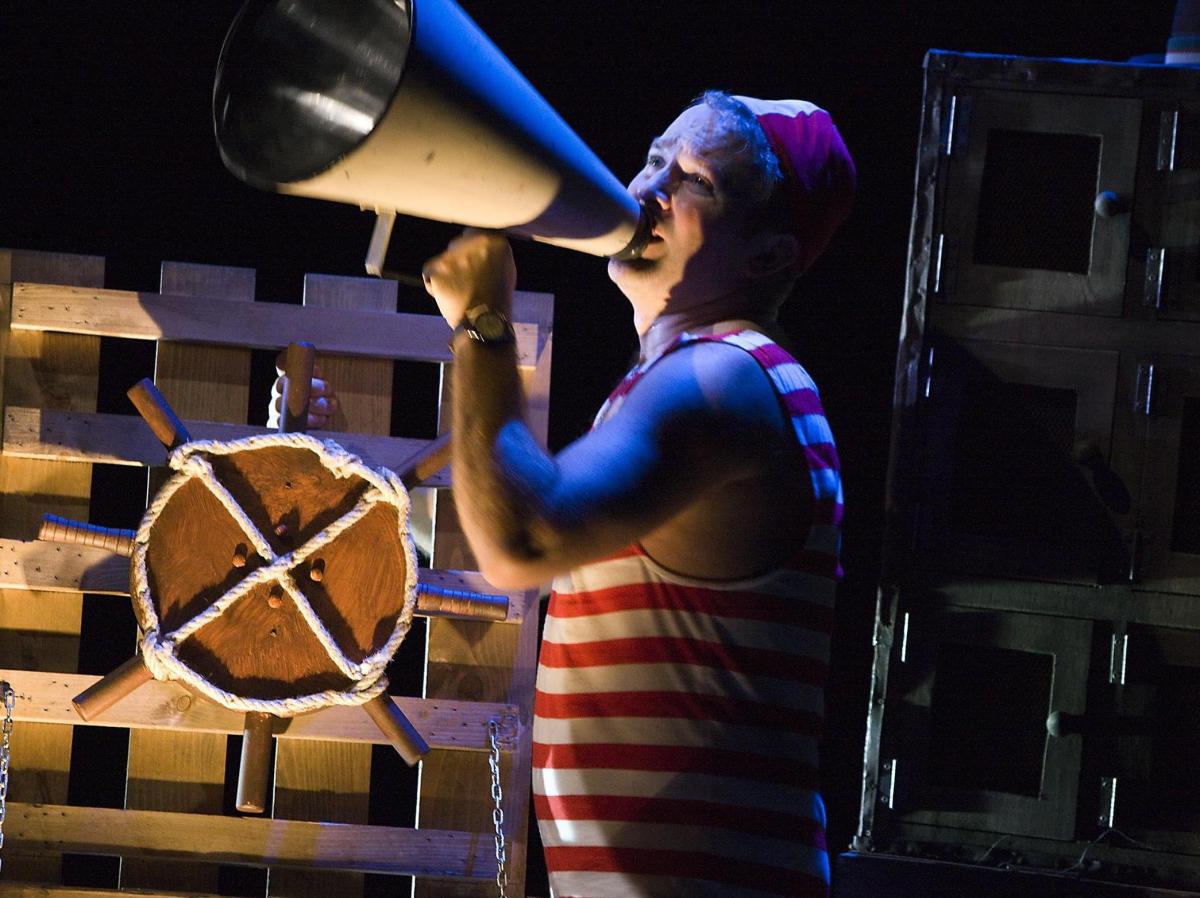Image source: Theatre Lovett.
The Theatre Lovett’s one-man production, The Girl Who Forgot to Sing Badly, a heady mix of physical theatre, musical adventure – and tragedy – is an out-of-the-box experience.
‘A different type of hero altogether’ is Peggy O’Hegarty, the protagonist and one of five characters performed by Louis Lovett’s vocal and physical feats. Simple vocal and physical gestures present swift character changes, while musical motifs reminisce classic children’s tales (a bathing suit reveal beneath a waterproof presents both Peggy and the villain, Peter, who registers Prokofiev’s bass clarinet in Peter and the Wolf.) The adventure actively embraces sadness, tragedy – and, aimed at over six audience, ‘bloody’ gore – in an entire theatrical experience.
With its maxim, ‘theatre that makes you think’, Irish production company, The Theatre Lovette aims to empower audiences through creating theatre ‘without patronizing, stereotyping or belittling’. Embracing uncertainty and the unknown it recalls, in spirit, Maurice Sendak’s approach: ‘Children who are never satisfied with condescending material. Children who understand real emotion and true feeling. Children who are not afraid of emotional truth.’
Tasmanian writer, Finegan Kruckemeyer, presents an energetic tale of a family of packers and the tragedy and adventure that beset when ‘the phone stopped ringing,’ effectively leaving dis-employment in its wake. The play is a finely crafted balance of emotional and theatrical engagement, with the story of Peggy O’Hegarty and her family nested within pilot-adventurer, the Biggles-like narrator, bookending, and literally packing away, the narrative.
Paul O’Mahony’s meticulous box-set stage is magically drawn out; it expands and contracts like a breath throughout the production, opening out into a moored boat and folding into a miniature box-theatre for the hero’s sidekick, mouse Hildegaard. However, this fourth wall removal is a sturdy metaphor for the production’s nested story. The box-within-a-box story suggests the significance of inner resilience as Peggy mobilizes against the adversity her parents succumb to; shrinking to their beds when the phone stops ringing – a message bolstered in the final scenes as Peggy pleads to ‘spend more time together as a family unit’/ ‘I don’t want you to sleep during the day anymore.’ The recent recession and unemployment in Ireland, perhaps a palimpsest of the narrative, is not a forced message. Nor is the play ambling in the regeneration of childhood that impelled Grandpa Joe Bucket to abandon his bed. But the perennial parentless child that has shaped children’s fiction from Peter Pan, Alice in Wonderland to Harry Potter is mobilized by Peggy to suggest her inner resilience – and glee. In the musical number, ‘This is my city now’, Peggy inhabits the deserted town with abandon – watching three movies at a time, breaking inside rich houses and wardrobes, setting garbage bins off like dominos.
The Girl Who Forgot to Sing Badly is essentially about the incipient art of storytelling. Lovett’s/the narrator’s epilogue sets out story elements, often incidentally, as he removes the stage walls of the packing box. A statue, a small mouse, a hero, a new type of cake the German’s would like, a dress and a dance, a bloody tale, a tragedy, and finally, a last sentence: these elements are vocally volunteered by a willing audience, to recall when the narrator, like the hero, has forgotten; a fill-in-the-blank game that draws in the ‘miniature humans’ in an interactive theatre that has an eye to the emotional range of its audience. Asking the school group audience, how did you get here? the narrator chases with ‘Do wheels on bus still go round and round?’ by way of distilling its over seven plus audience.
The Lovett Theatre create an adventure, and much like the confusable title, a double take that suggests storytelling is a matter of misperception and misrecognition. Introducing the small mouse, we are immediately commandeered by the Biggles-like pilot-adventurer; this story is not about him; but ‘a different hero altogether’. The eight scene play and epilogue is punctuated by voice-over that enunciates the scenes from the opening ‘good bit where we enjoy meeting new people’ through the tragedy and resolution. Lovett’s clever false start before Peggy’s life falls apart, intuits the audience emotionally – yes they want to continue the story, to drive its forward movement. But on the precipice of her life falling apart. It is the emotional truth the theatre company is aiming for.
The Girl Who Forgot to Sing Badly reminds us that stories occur via a simple mechanism of one word inside another, inside another; and stories, in turn, mobilize resilience in the face of adversity.
Rating: 3 ½ out of 5 starsThe Girl Who Forgot to Sing Badly
Created by: The Theatre Lovett
Performed by: Louis Lovett
Written by: Finegan Kruckemeyer
Directed by: Lynne Parker
Produced by: Muireann Ahern Lovett
Arts Centre Melbourne, St Kilda Rd
www.artscentremelbourne.com.au
5 – 8 August





